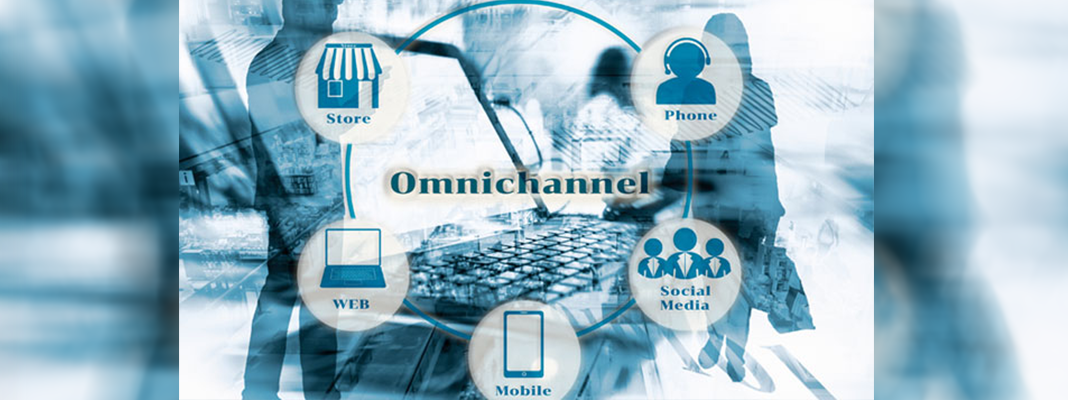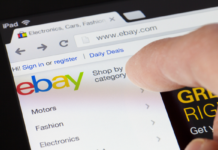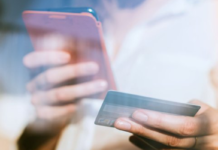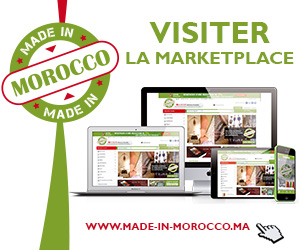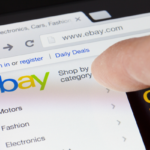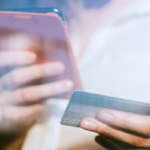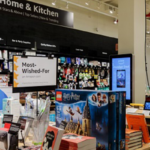Once — and sometimes still — bitter rivals, online and offline shopping businesses have to work together to improve customer engagement and retention. Although some brick-and-mortar stores are suffering revenue loss to online retailers, there is still an important space for them in the shopping experience. By joining forces, brick-and-mortar and online stores can meet the emerging needs of customers seeking an integrated and seamless experience, allowing growth and profitability for brands.
With the high demand for convenience and experiential shopping environments, today’s customers are omnichannel shoppers. Meaning, they will tap both online and offline retailers to complete their shopping or visit both retail environments before making a single purchase through one of the channels. Retailers that can provide a unique and well-planned omnichannel experience will come out on top — capturing the attention of and earning purchases from today’s customers.
Gain Experience: Shoppers Are Looking for More
Experiential retail is breathing new life back into brick-and-mortar stores. Customers are demanding more from their shopping experiences and that includes unique in-store environments that take shopping to the next level. When seeking the added value of experiential retail, customers are looking for new ways to interact with products. They want customized experiences, whether online or offline, which let them connect on a deeper level with the products or brands and provide one-on-one attention from knowledgeable staff.
In order to provide a successful experiential retail environment, retailers should strive to make the shopping experience intuitive, human, meaningful, immersive, personalized and accessible, Forbes notes. By hitting on these six areas, retailers can ensure that they are meeting the shopping expectations of their consumers.
Trend-Setting: Bringing Online Features Into the Physical Store
Brands must think past the traditional retail model. More than a simple exchange of money for goods or services, retailers should be providing customized and specialized in-store experiences tailored to online shoppers. This could also mean bringing some of the benefits of online shopping to the physical stores.
Allowing customers to receive products the way they prefer is a great start. Think about the needs of someone who is shopping online and address those needs in the physical store. Speed and ease of experience should be top of mind. Enhance the online experience with in-store pickup and cashierless checkout. This allows online shoppers to get the instant gratification of in-store purchases without having to navigate the store itself.
Conversely, those shoppers who prefer to have items delivered to their doorsteps could shop in stores and then get free home delivery — allowing them to continue their day without being weighed down by bags or large purchases.
Harnessing new technology is a great way to bring the online experience into the physical store location. Leverage augmented reality (AR) technology and allow adults to “try on” clothing without having to step foot in a fitting room. Harness virtual reality (VR) technology to allow customers to “test” products such as sporting goods equipment or other products that may typically take up valuable in-store real estate.
Even auto retailers could benefit from these experiential technologies, allowing shoppers to do most of the road testing and research from the comfort of their homes or on-site lounges.
DSW is testing out a new experience in select locations that adds an experiential element to the in-store visit, but also brings a space for online shoppers to appreciate in-store features. The shoe retailer is testing out a model with space for manicures and pedicures, an expanded loyalty program, as well as a separate area for shoe maintenance, repairs and returns, As described in an article in Bustle.
One online-focused feature of the new model is the “Sole Lounge,” a dedicated and comfortable space for in-store pickup of online orders, returns, exchanges and other services. This allows online shoppers to pick up shoes in store, with a cozy and dedicated space for them to try on shoes right away by the pickup counter. Or, online shoppers who received shoes at home can return or exchange in a space separated from the hustle and bustle of the store, something online shoppers are notorious for wanting to avoid.
Retailers need to find inventive ways to make use of their retail spaces to create that unique experience inside the store itself for online shoppers. These added values will draw in more customers, help retain current customers, attract online shoppers and create innovation, pushing the brand forward in the eyes of the customers.
Tapping Tradition: Bringing a Physical Space to Online Shopping
Equally, online retailers need to provide shoppers with the option of a physical store experience. The experiential pendulum swings both ways, and bringing some offline features to online shoppers can benefit e-commerce brands as well. In addition to same-day in-store pickup, online retailers should consider a space where shoppers can get to know their brands and products in physical locations.
Some well-known and successful brands started as e-commerce only, but have since found great value with physical store locations — Business Insider recently published a list of such firms. Brands like Bonobos, Warby Parker, Glossier and Casper all started with an e-commerce-only model, but since have expanded into the brick-and-mortar sector.
For online retailers looking to enhance their customer experience without investing too much to start, the pop-up is an innovative way to provide the customer with the added value they are seeking. Pop-ups allow e-commerce brands to test the waters of physical store locations. Due to the temporary nature of a pop-up, brands can “try before they buy,” allowing for advancement without tremendous commitment.
Pop-ups generally have a low cost of operation and can be used as a safe space to try new ways of connecting with the customer. Pop-ups provide a unique opportunity to collect data and capture consumer habits and feedback while still offering an affordable and agile solution.
E-commerce retailers could get feedback about products direct from customers at the time of their interactions, giving beneficial insights into making their products better and more attractive to consumers. Additionally, for online retailers, giving customers the opportunity to interact with the brands and products, even if on temporary basis, can create the connection and buzz needed to take an e-commerce seller to the next level. Pop-ups can also allow e-commerce retailers to test the demands of a brick-and-mortar store, perhaps allowing them to see if investing in a permanent physical location would be worthwhile and useful to meeting long-term goals.
Even big brands are taking notice of the benefits of pop-ups for experiential launches, and are tapping into the excitement and joy that surrounds a special and exclusive event. M&M’s parent company, Mars, established a pop-up in NYC so that fans could vote on the next Crunchy flavor, as AdWeek describes.
Even though the survey took place online, the retailer recognized the value in having a physical space to enhance the experience. Rooms were set up to highlight the three different flavor options: crunchy raspberry, crunchy espresso and crunchy mint.
Lots of Instagram-ready photo ops were included, and the company even created specialty cocktails based on the three flavors. This innovative way of bringing attention to a customer voting event was all thanks to the use of a pop-up store.
Double Whammy: When Online and Physical Selling Converge
Both brick-and-mortar and online retailers have tremendous opportunities to connect with consumers in new and innovative ways. As shoppers have raised the expectations from both arenas, retailers will find success in catering to both types of shoppers in both retail arenas.
Offering online shoppers added value in store that caters to their shopping styles will certainly help draw them to brick-and-mortar locations. E-commerce retailers can find added success in giving customers opportunities to get up close and personal with brand offerings at physical store locations.
Whether being tapped by an already prolific brand, a retailer or a small e-commerce company, the pop-up can provide a distinctive shopping space for brands to get to know and connect with their customers while learning about their shopping habits in more detail.
Pop-ups used by e-commerce retailers will provide flexible and affordable options for taking the next step to brick-and-mortar offerings. Physical stores might find an in-store pop-up, or “shop-in-shop” could provide online shoppers the intimate and convenient experiences they are seeking.
Combining the best of both worlds of online and offline retail will improve customer engagement and give retailer offerings the added value customers are seeking.


